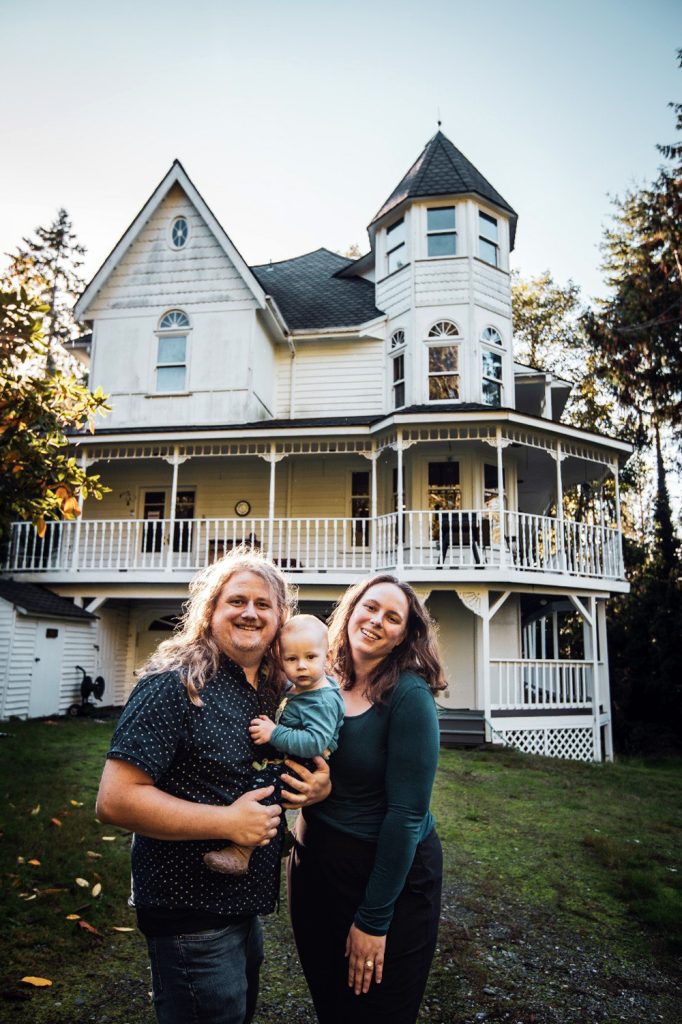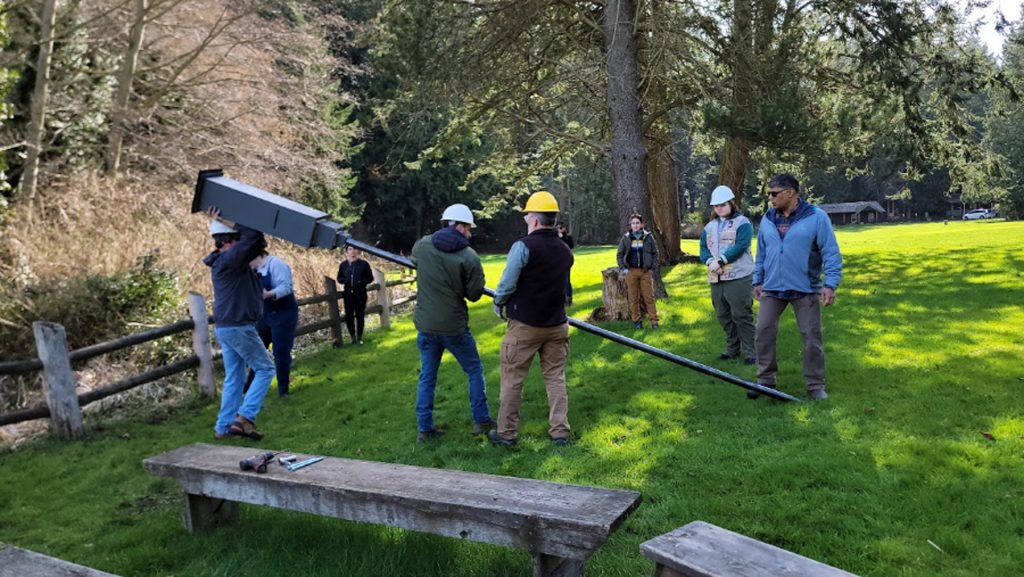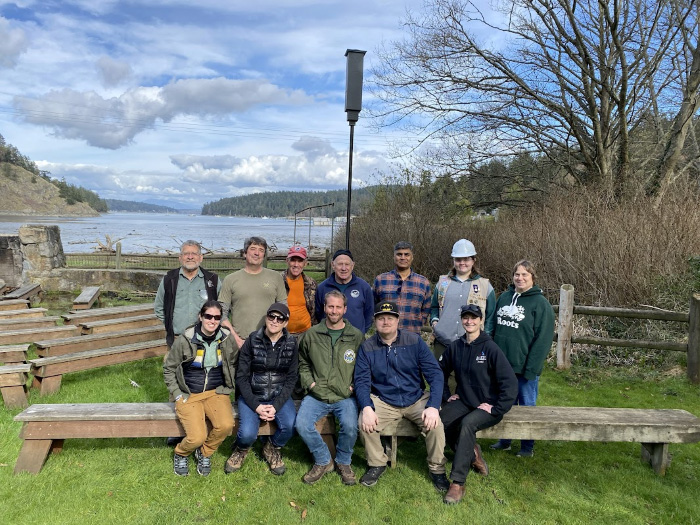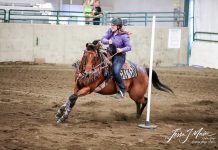As any good story might, this one starts with the purchase of a grandiose Victorian home in the Pacific Northwest, built close to the wild and gorgeous natural landscape of Deception Pass State Park.
“My mom was doing some estate sale shopping in Island County, just driving around, and she saw this beautiful house,” says Mackenzie Powell, now the owner of said home with husband Tom Riecken. “I went up and took a look at it — this was in the middle of winter. Tom and I decided we could make it work as he just got a fully remote job. We were incredibly excited.”
The couple purchased the home, looking forward to the opportunity to start a new adventure with their baby in tow. “In the spring, we were there for a few months, I think about late May, and Tom was away for work,” she says. “My sister came over to kind of be that second person in the house, and stayed on the top level.”

Mackenzie’s sister came down after her first night’s stay and told her she heard strange scratching sounds coming from inside the walls. Thinking it might be vermin in the house, the sisters set traps and let them sit for a couple of days.
“We thought it was so weird we didn’t catch anything,” Mackenzie says. “Then my mom came back and told me she’d seen a lot of bats outside the bathroom right around dusk.” At dusk the next day, Mackenzie watched bats pouring from her roof, flying off into the growing darkness.
Several rounds of rabies shots for her and her family, a $40,000 quote for a bat exclusion, and many hopeless and frustrating moments later, Mackenzie found Amber Nearing.
“I’ve been a Girl Scout for seven years,” says Amber. “I’m at a senior level, a second-year senior, and a sophomore in high school.”
Amber had learned about a house infested with bats from an article in the Whidbey Island News and knew she had to act.
“I quite enjoy bats because they’re very cool creatures,” she says. “I thought it’d be a good idea to try and make a new habitat for them.”

Amber decided she would make her gold level project with Girl Scouts — a project meant to be an intense community service venture involving the education of community members — based around creating bat boxes for the hundreds of bats roosting in the home’s upper level.
When Amber found Mackenzie, the bat infestation issues had reached a fever pitch in the family’s household. They’d lived in the house for a few seasons and it was nearing winter, when the bats would migrate away.
“We met with Amber, and she’s just incredible,” Mackenzie says. “She volunteered and let me know that she could make bat boxes. She did her own funding and raised enough to make 40 boxes. We also connected with the Master Hunters of the Fish and Wildlife Department to help move these bats.”

After working with Amber on a solution and finalizing their bat box plans, Mackenzie sought out Jason Davies, co-founder and educational coordinator for the Bellingham Makerspace.
“We’re a nonprofit tool and skill-sharing organization,” says Jason. “Part of our mission is to love our community through making stuff.” In this case, Jason was able to provide an area for the wood to be delivered to for Amber.
“Most of the materials used are wood and plywood,” Jason says. “They end up looking like a mailbox that would be next to your front door — the kind of flat and tall design where you put the letters in the back. So, there’s a landing pad on the bottom of the box, and they’ll land there and crawl up inside the box where there’s a number of little passages, making them a nice and cozy space where they can hang there all night and be happy.”
Amber and her family cut the wood, stained it, and assembled the bat boxes. Then the next phase of her gold project commenced: installation.
“The amount of support from Amber, and from Kurt Merg with the Washington Department of Fish and Wildlife, has been incredible,” says Tom. “We had a bunch of volunteers from the Master Hunters Program, plus bat conservation groups, and State Parks.”
The Department of Fish and Wildlife has helped them set up boxes in the park near the family’s home so that when the bats come back, they have somewhere to go. At this point, Amber is about a third of the way through the entire project.
“Right now, we’re in a waiting game because we’ve done all this work,” says Mackenzie. “We did a teardown and cleaned all the bat guano out and installed a new roof to keep the bats out. We think the bats can’t come back but we’re in limbo to see if the new roof and bat boxes work.”
For Mackenzie and I, our focus has been on the remodel work,” Tom says. “We probably removed over 2,000 gallons of guano. And it’s been a long, slow process because we have to balance that work against full time jobs and raising a one-year-old.”
Mackenzie and Tom are dedicated to not only making their house a safe space but providing a new home for the bats they’re evicting. Eventually, they hope to open their very own “Bat and Breakfast” in the immense Victorian. The entire saga has been a whirlwind, a roller coaster ride and, hopefully, with the help of an entire community of people between two counties, a happy ever after for everyone — including the bats.





































